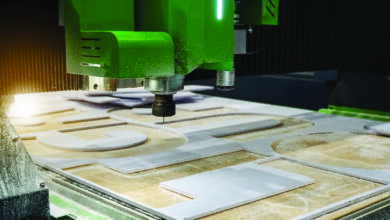Chat with Matt: Rick Williams
A short interview with Rick Williams, owner of Rick's Sign Company in Longview, Texas, and longtime contributor to Sign Business and Sign & Digital Graphics magazines
This month’s guest is Rick Williams, sign maker and editorial contributor to this magazine for more than 30 years.
Q: If you were graduating high school this year, could you repeat the career path you took when you started your career?
Actually, I started my sign business at 19 while going to a local two-year college. When I graduated in 1974, I had not determined what I needed to study at a university. After all these years, I still have no idea. So, continuing a path in the local sign business, though not planned at all since at first it was just a way to fund my college expenses, seemed to make sense then and I guess it still does.
Q: Long ago, your father in law once told you, “You’re a hard-working young man, and when you run out of signs to make, you’ll find something else to do.” If you weren’t making signs, what would you be doing?
My other interest when I was a young man was in film making, but how I might have found a career path in film or television I have no idea. That would probably have required a move from Texas to California, but I think Texas will always be home to me, as it was for at least four generations before me.
Q: You’ve been documenting your time in the sign industry for 30 years in Sign Business and Sign & Digital Graphics magazines and now have a book out called “Best of Rick/In the Trenches.” What made you first decide that you should be an author as well as a sign guy.
I actually never made that decision. It was Bob Wieber, the owner and CEO of NBM, Inc. that determined my “In the Trenches” articles over the years would make a good book. Though the book idea was somewhat flattering to me, until it was actually in print I don’t think I took that idea all that seriously.
Q: After all these years, the town of Longview, Texas, as well as surrounding areas are packed with signs from Rick’s Sign Company. Which one are you most proud of, and why?
I see my work all over my home town and this county, but it is hard to say which ones I am proud of. I have always considered myself as a typical sign maker, and really don’t do super custom signs. I just try to do professional signs and keep our standards up. But, there are some past jobs I always enjoy seeing such as the waterjet cut letters and raised logos we’ve done in several places inside our county courthouse, large hand-painted logos on storage tanks or buildings, and most anything hand-fabricated and one-of-a-kind, which I mostly do myself.
Q: From your writing, we know how important your family and faith are to you. What’s the toughest part about being a sign man when it comes to balancing work, family life and community responsibilities?
The toughest part of the sign business is managing the inescapable inefficiency of doing made-to-order anything. There is always more setup time than expected, often unpaid revision work, time in the truck going to see job sites in the field, and of course permits, paperwork and tax forms, which are never really paid for. To me, the sign work itself is almost all fun, but the wasted time is, well … a waste. Unfortunately, that time is taken from what would be spent with my immediately family and church family. I fight this battle every day and often feel like I am on the losing end even after all my years of experience.
Q: You’ve worked during a time when you’ve had to add pixels and computers to your paints and brushes. What’s been the biggest technological advancement your shop has successfully integrated into making your shop successful?
Well, I could write a whole lot about this subject, and over time I guess I have. Rick’s Sign Co, though still small, has certainly changed over the years, and my sons and I run a second business that is across the street from the sign shop, and is somewhat connected to what we do here. Between the two businesses and over time, we have purchased a lot of serious equipment, the technology of most of it did not exist in 1974, most all of which is all driven by computers and software, the underlying technology that has revolutionized this business and many others.
Back when I started, officially in 1974, computers were mostly unknown and those that existed belonged to NASA and AT&T. Now they drive our plotters, printers, rotary and laser engravers, as well as waterjets, and plasma and router tables. Interestingly, our large pieces of equipment are mostly used for contract work for local manufacturers, not sign makers. But I get to play with all of them (and help make the payments).
With the aid of those types of equipment, we can make, cut, decorate and letter just about anything, but we still do old-school screen printing (signs, not shirts), can still hand letter large projects, and paint, weld, and even dig our own post holes. I consider our sign business a typical commercial sign shop with a lot of tools to work with, both old and new.
Of course, the technology available to sign makers now means there are no full-time hand lettering sign guys in our county (there were a dozen when I started). Today, the work our sign shop and most others do greatly relies on machines and software that weren’t even dreamed of back when our little sign business started in the early ’70s. It has been an interesting ride.



